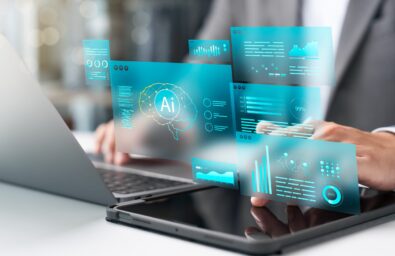
As discussions around artificial intelligence (AI) often focus on its broader impact on employment and career trajectories, a more pertinent question for quality assurance (QA) professionals is how to adapt and enhance their roles by integrating AI software testing into daily workflows.
AI is no longer a theoretical concept confined to future projections, it is now a practical component of modern software development. Within the QA domain, AI is enabling teams to streamline repetitive tasks, detect issues at earlier stages, and operate more effectively throughout the software development lifecycle.
Redefining QA with AI
The integration of artificial intelligence into software testing does not alter the fundamental objectives of quality assurance; rather, it enhances the methods used to achieve them. AI offers significant advantages in automating routine tasks, analyzing large datasets, and identifying patterns with speed and precision. However, its most effective application occurs when combined with the critical thinking, domain knowledge, and contextual awareness of QA professionals.
This collaborative approach is already being applied in day-to-day QA activities, where the complementary strengths of human expertise and AI technologies provide tangible benefits. These include:
- Identifying effective use cases for AI in testing: such as test case generation, data analysis, and prioritization of testing efforts.
- Interpreting and validating AI-generated outputs: to ensure alignment with the product’s context, risk considerations, and business requirements.
- Focusing on broader quality objectives: including usability, security, and core business functionality.
- Addressing complex or ambiguous scenarios: where human judgment remains essential, such as evaluating user experience or managing ethical implications in AI-driven features.
In many development teams, AI is already part of the QA toolkit. It is crucial to use AI effectively, not as a replacement for human expertise, but as a means to enhance it. As the QA function continues to evolve, professionals who embrace AI-assisted methods increase their impact, improve efficiency, and contribute more strategically to product quality.
Everyday use cases
Integrating AI into daily QA practices does not require major organizational changes. On the contrary, small, targeted improvements can lead to measurable gains in speed, accuracy, and efficiency. Below are practical applications where AI can support quality assurance activities across different stages of the testing process.
- Test case generation and optimization
AI capabilities: AI tools can interpret user stories, functional specifications, and acceptance criteria to propose relevant test scenarios. Some solutions also evaluate existing test suites to identify duplicate cases, gaps in coverage, or outdated logic.
Typical applications:
- Drafting initial test cases based on documented requirements
- Validating that all business rules are reflected before implementation
- Detecting and removing redundant steps within regression libraries
Note: QA professionals should always review and tailor AI-generated suggestions to ensure relevance and accuracy.
- Smart test data management
AI capabilities: AI can generate realistic and varied test data sets, including edge cases and invalid inputs, while ensuring consistency across environments. This helps reduce reliance on production data and improves test reliability.
Typical applications:
- Generating synthetic datasets (e.g., user profiles, date ranges, transaction amounts)
- Simulating diverse user behaviors or usage patterns
- Replacing production data with anonymized or compliant alternatives
Note: Validation is essential, particularly when testing systems governed by strict business rules or regulatory requirements.
- Predictive analysis for risk-based testing
AI capabilities: AI can analyze past defect logs, code changes, and test outcomes to assess areas of elevated risk. This is especially beneficial in large-scale or rapidly evolving systems.
Typical applications:
- Prioritizing regression tests for high-risk modules
- Identifying historically problematic code areas before deployment
- Supporting sprint planning with data-driven risk assessments
Note: The effectiveness of predictive analysis improves with the availability of comprehensive historical data and structured reporting.
- Visual regression and UI testing
AI capabilities: AI-driven visual testing tools compare UI renders over time and across environments, identifying layout discrepancies, overlapping elements, or rendering inconsistencies beyond basic pixel differences.
Typical applications
- Automating UI validation in visually complex applications (e.g., dashboards, forms)
- Detecting subtle changes like font inconsistencies or missing elements
- Integrating visual testing into continuous integration/continuous delivery (CI/CD) pipelines
- Log and anomaly analysis
AI capabilities: AI systems can efficiently scan and interpret log files, identifying unusual behaviors such as error spikes, repeated retries, or silent failures; insights that are often time-consuming to uncover manually.
Typical applications
- Detecting silent failures during test runs
- Analyzing patterns in production logs to uncover QA gaps
- Supporting root cause analysis during defect refinement
Note: Optimal performance is achieved when logs are structured (e.g., JSON format) and integrated with monitoring solutions.
- Self-healing test automation
AI capabilities: In UI testing, frequent changes to front-end components can lead to broken automation scripts. AI-enhanced automation tools can adapt to these changes by adjusting locators based on contextual clues, reducing test instability.
Typical applications
- Improving reliability of UI test suites in projects with frequent interface updates
- Minimizing manual updates caused by changes to attributes like ID, class, or layout
Note: While this reduces maintenance effort, it does not eliminate the need for sound locator strategies and manual oversight.
Human expertise, AI amplified
Fostering a culture of continuous learning and adopting AI-enhanced practices allows test engineers to increase their efficiency, elevate software quality, and play a more strategic role in project outcomes. When AI is viewed not as a replacement but as a collaborative tool, it becomes a means of extending human capability, supporting routine tasks and enabling professionals to focus on the more nuanced and judgment-driven aspects of quality assurance.
The key challenge (and opportunity) lies in actively exploring and integrating these evolving technologies into everyday workflows.
By leveraging AI software testing in a thoughtful and deliberate manner, QA teams can redirect their efforts toward high-impact priorities such as overall product quality, user experience, and release confidence.